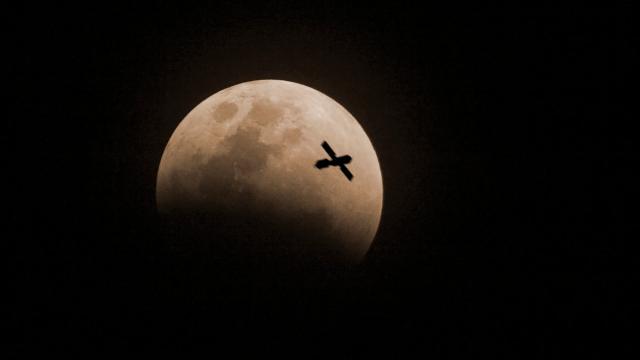Space is a busy place these days, and it’s only going to get busier as more private companies and governments clutter the skies with satellites. In this lawless new frontier, a marshal is needed to keep things in check. Enter the Cislunar Highway Patrol System.
The U.S. Air Force Research Laboratory recently released a video detailing its plans to keep an eye on the skies. It kicks off with a slightly ominous voice telling the viewer, “Until now, the United States space mission extended 35,406 km above Earth. That was then, this is now. The Air Force Research Laboratory is extending that range by 10 times, and the operations area of the United States by 1,000 times.”
Of course, that area is mostly empty vacuum, but a win is a win.
The AFRL calls its automatic space cops the “Cislunar Highway Patrol System or CHPS. Much like our Earth-bound CHPS, this satellite would be devoted to monitoring the movement of satellites and space debris in order to cut down on collisions. It likely won’t be able to do much about these collisions, but it will enhance our ability to track objects beyond the 35,406 km usually reserved for most space traffic to the dark side of the moon.
And there’s about to be a lot of objects that far out. The moon is a happening place again, as NASA plans to put astronaut boots on the ground via the Artemis program, eventually establishing a long term base on the moon, the Hill reports. China and Russia are partnering together with similar plans, and there are dozens of other missions planned in the next decade. Considering the antagonistic relationship the U.S. has with these two nations, the CHPS system could very likely also be a tool in safeguarding national security. Ars Technica spoke to Brian Weeden, director of program planning for the Secure World Foundation about he security aspect of such a system:
Weeden thinks there is also another strategic element to this new program. Military leaders, he said, are concerned about space objects that get placed into cislunar space by other governments and are then lost by the existing space situational awareness networks focused on low Earth orbit and geostationary orbit.
Such objects, he said, could swing around the Moon and potentially come back to attack a US military satellite in geostationary space.
“I think that’s far fetched, but it is feasible from a physics perspective and would definitely exploit a gap in their current space domain awareness,” Weeden said. “I think they are far more concerned about that than any actual threats in cislunar space because the US doesn’t have any military assets in cislunar space right now.”
The CHPS satellite system is still a long way off in the future as Ars Technica reports AFRL is putting out a call for prototype proposals next month, with aims to award a contract by July.
